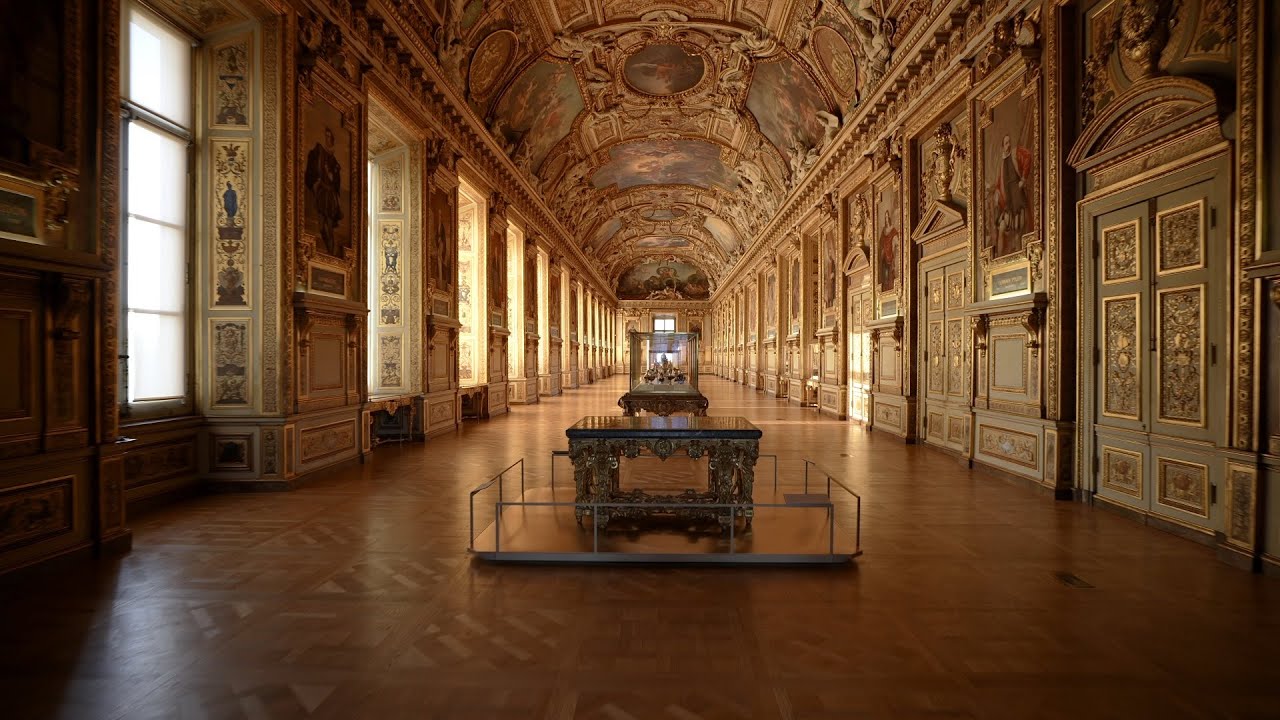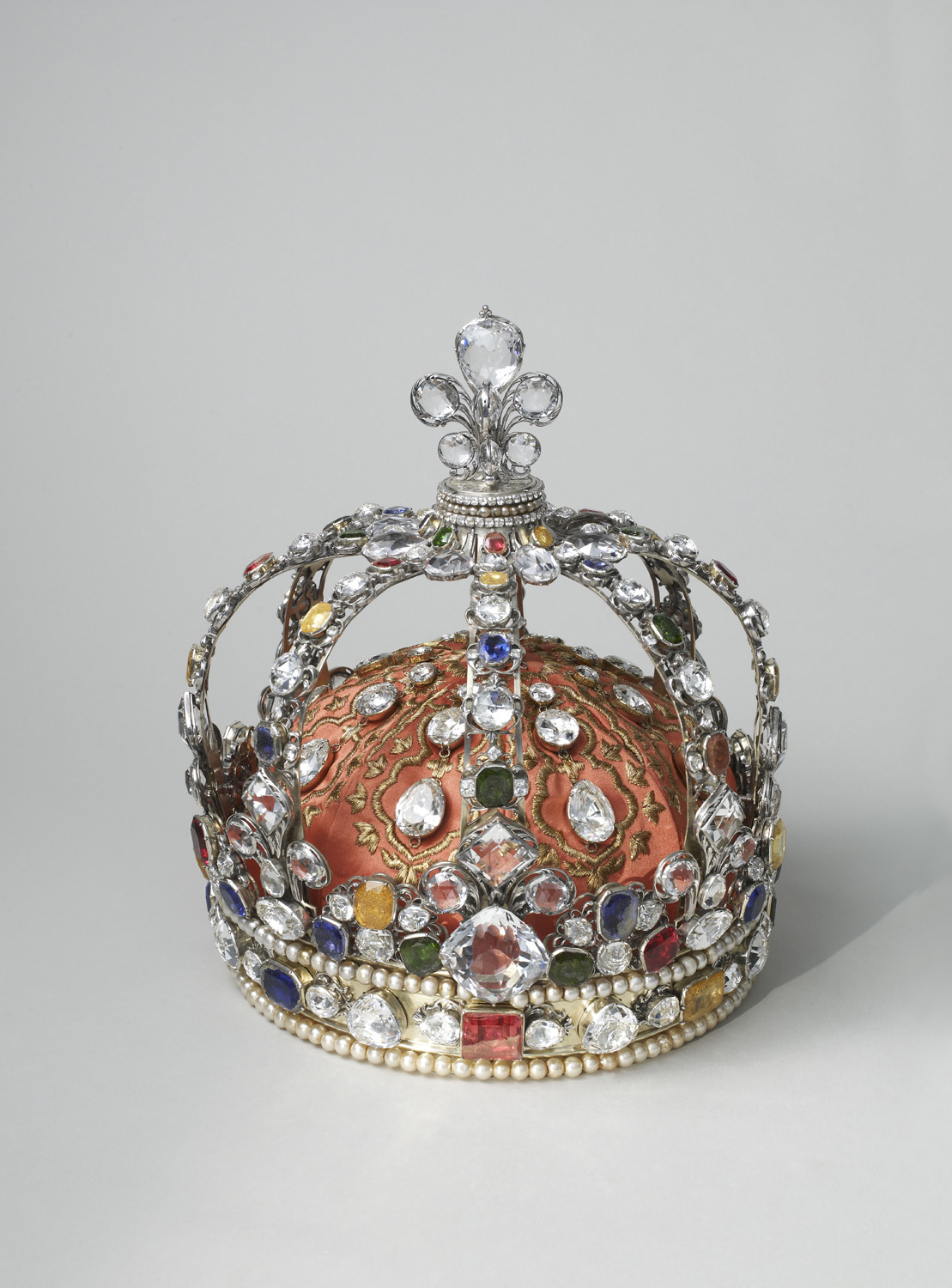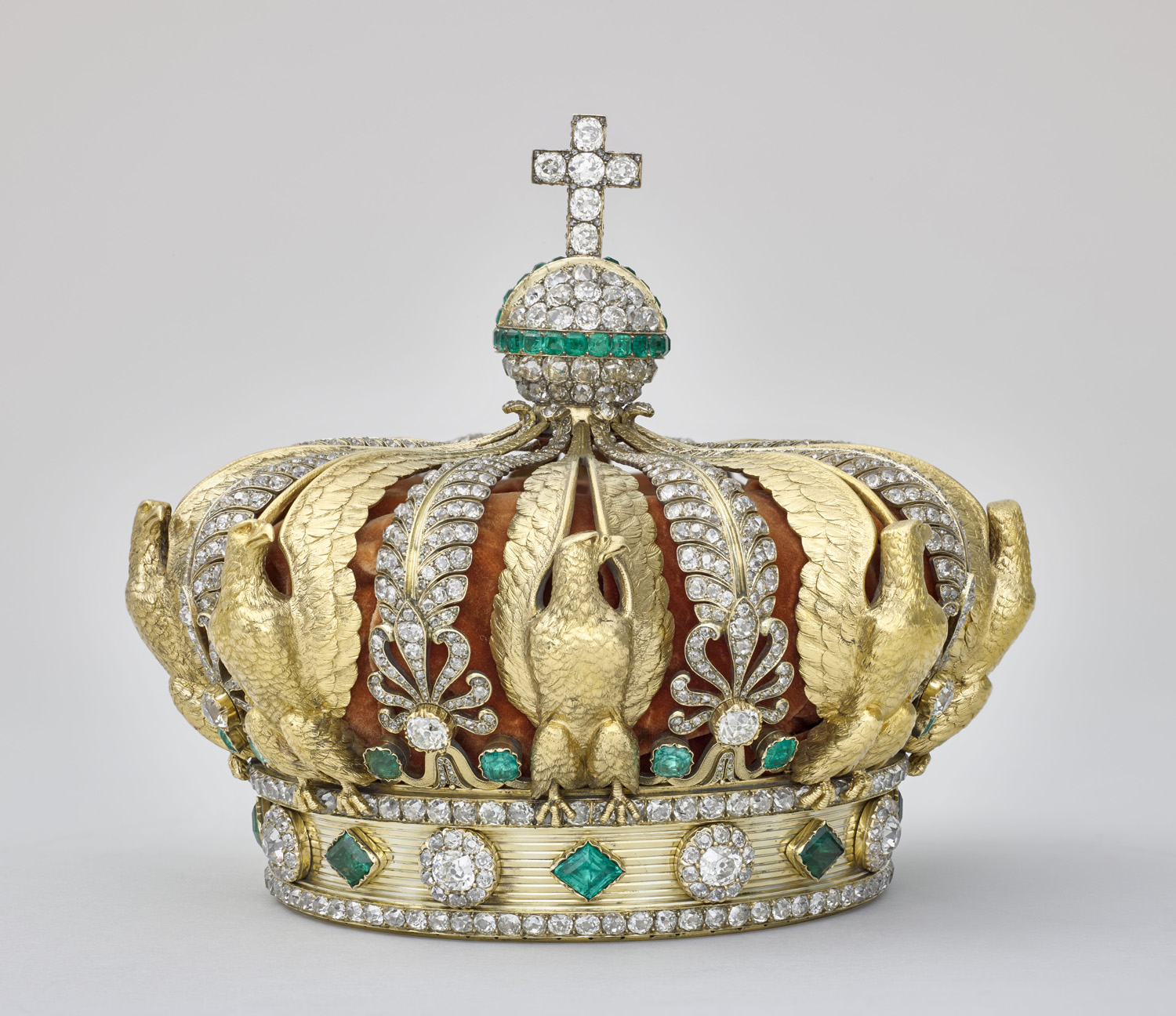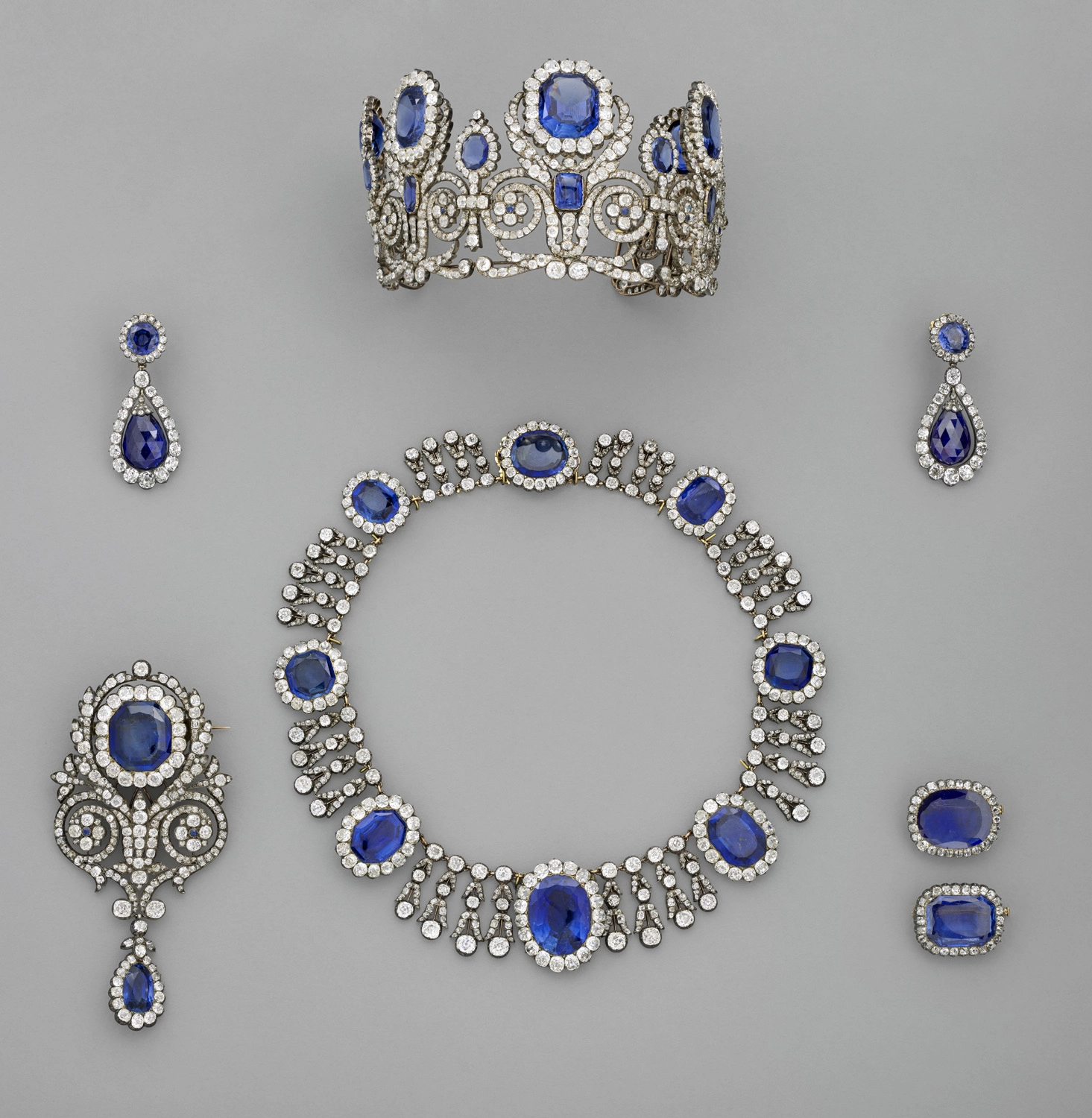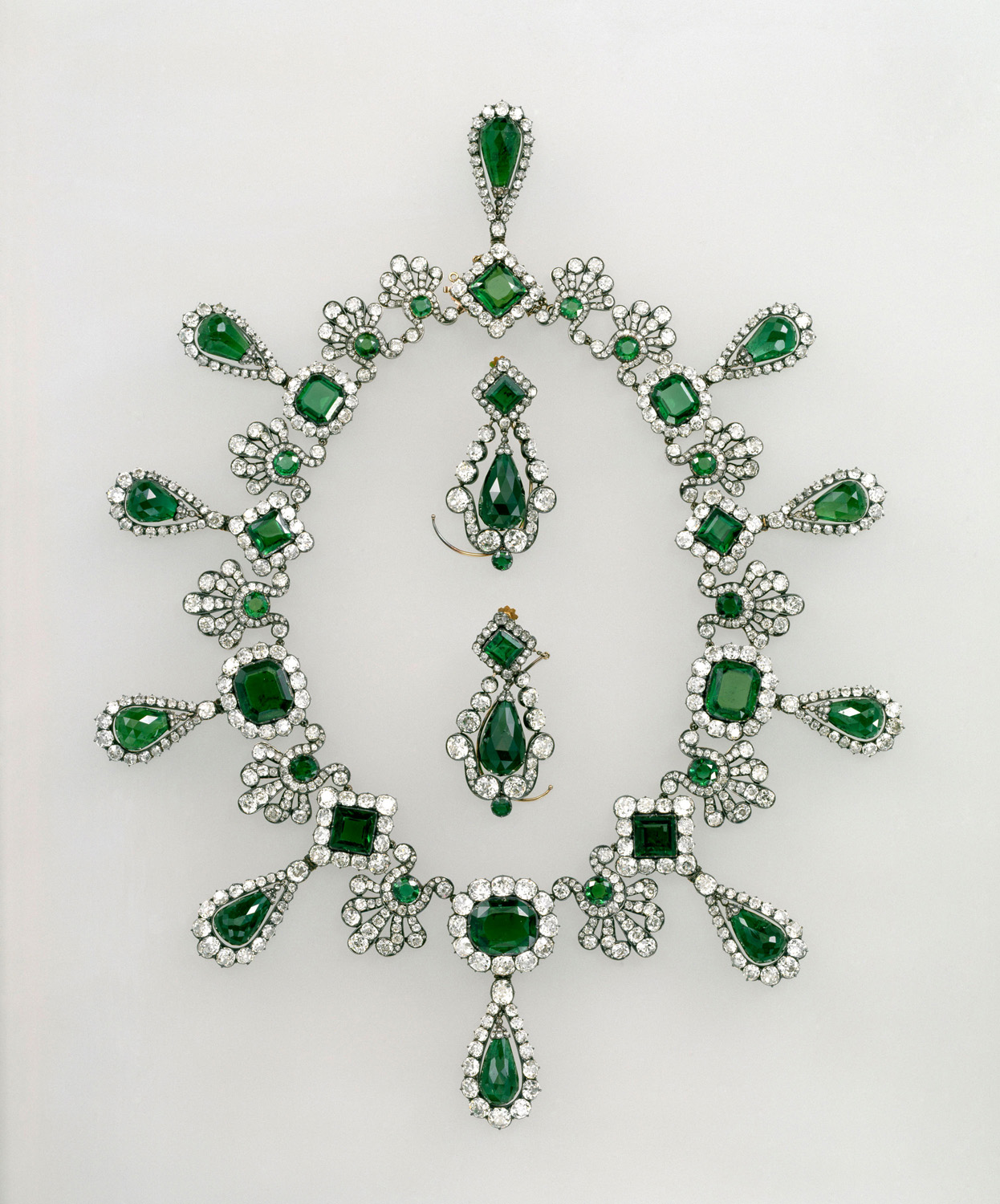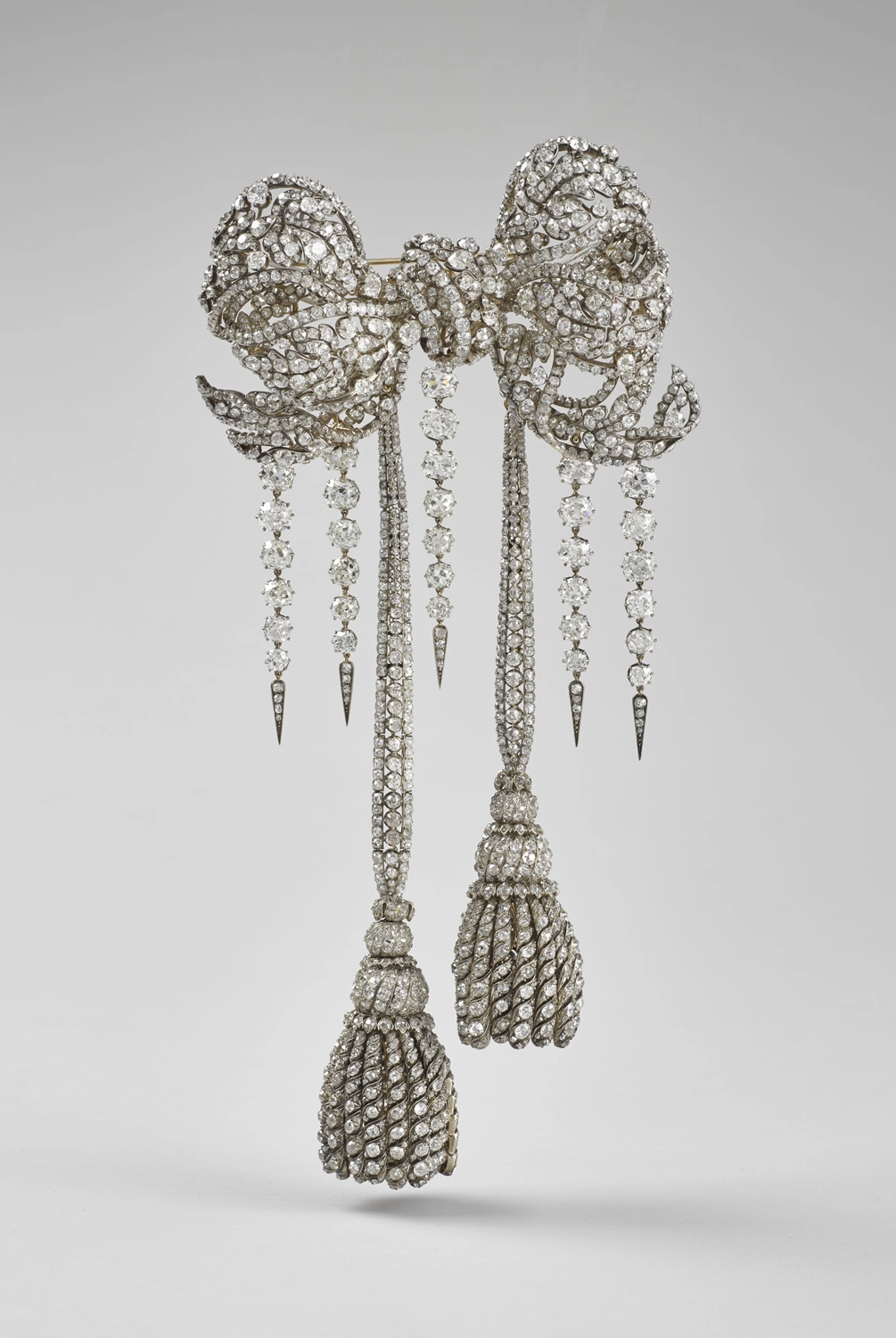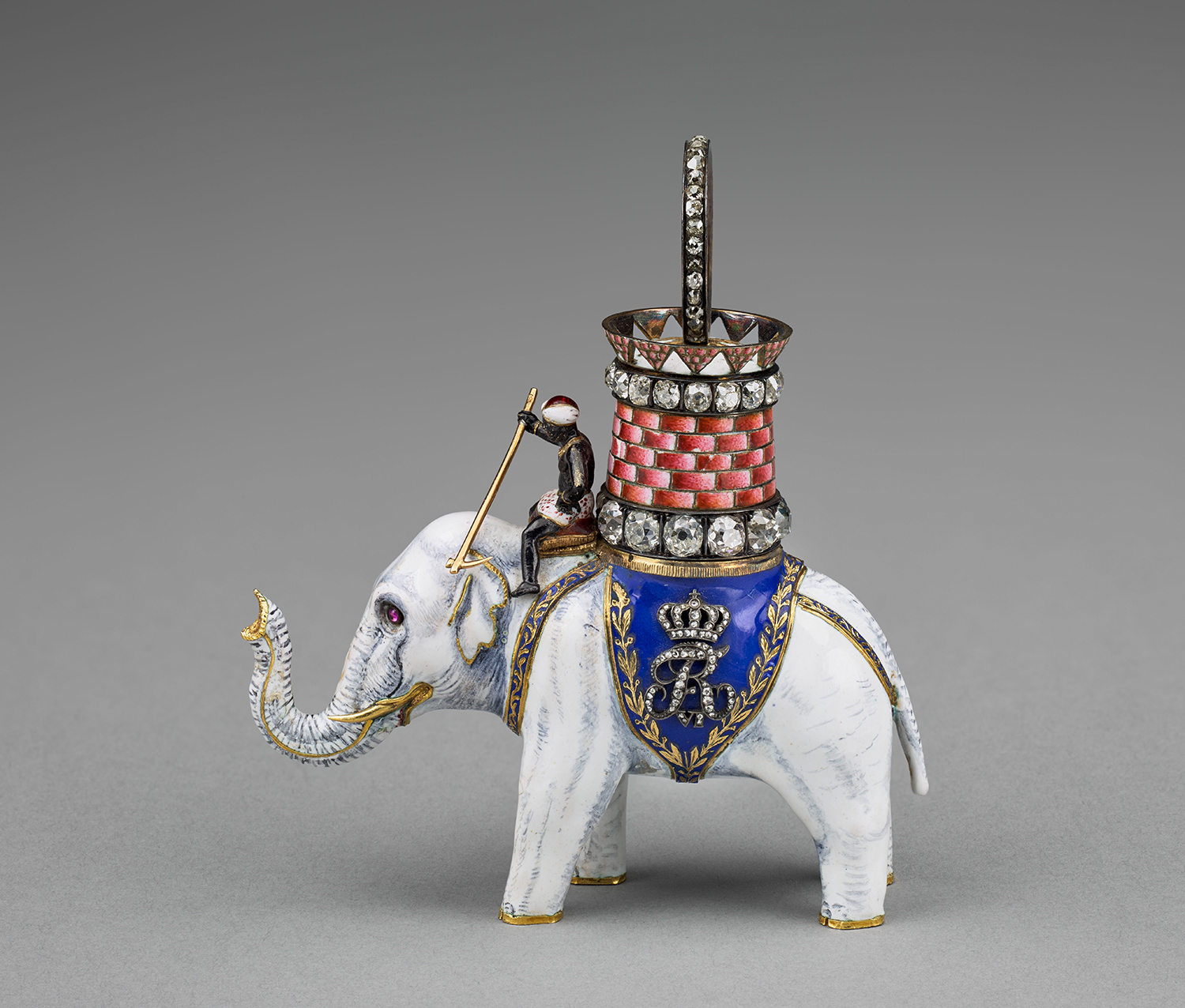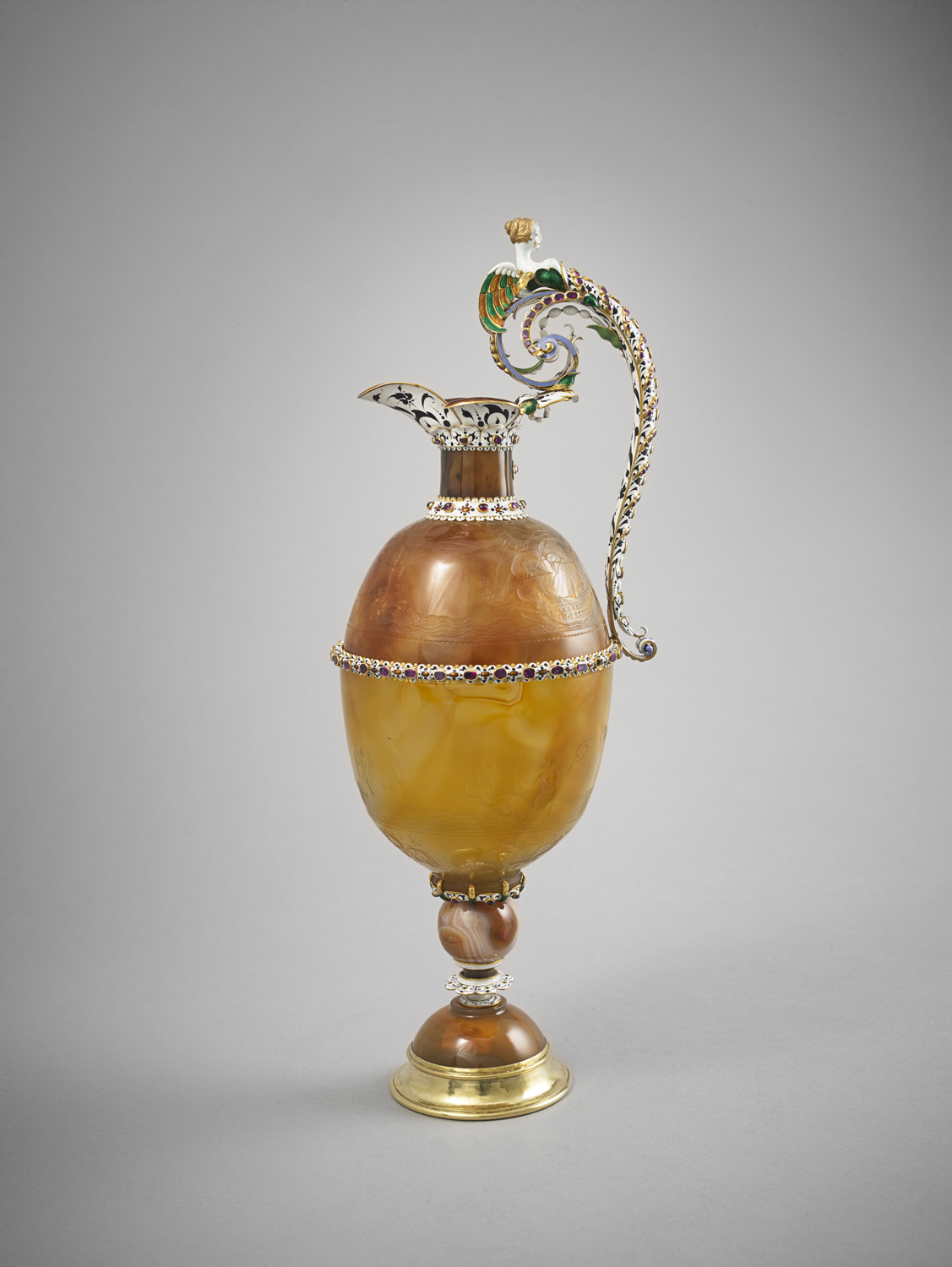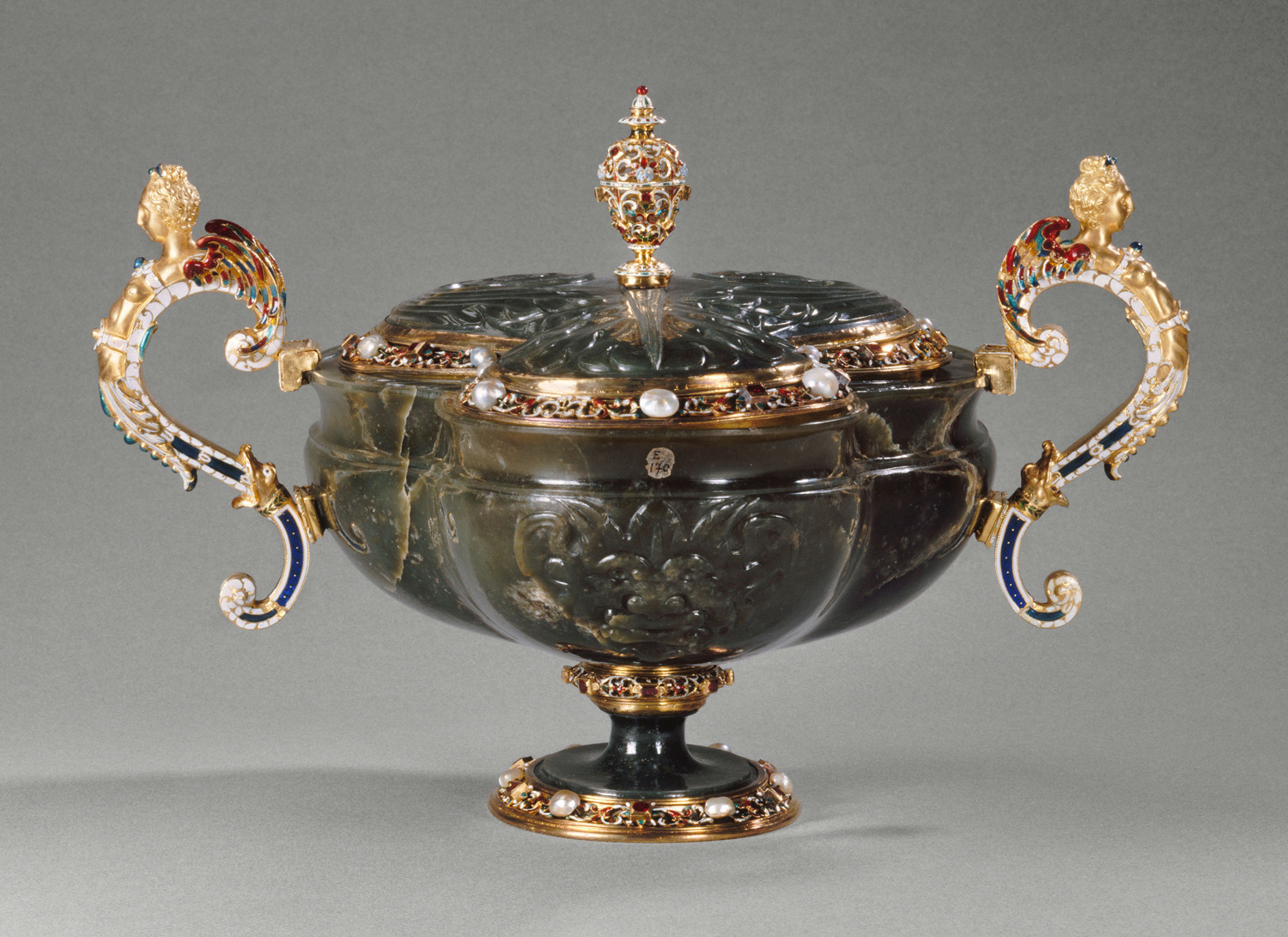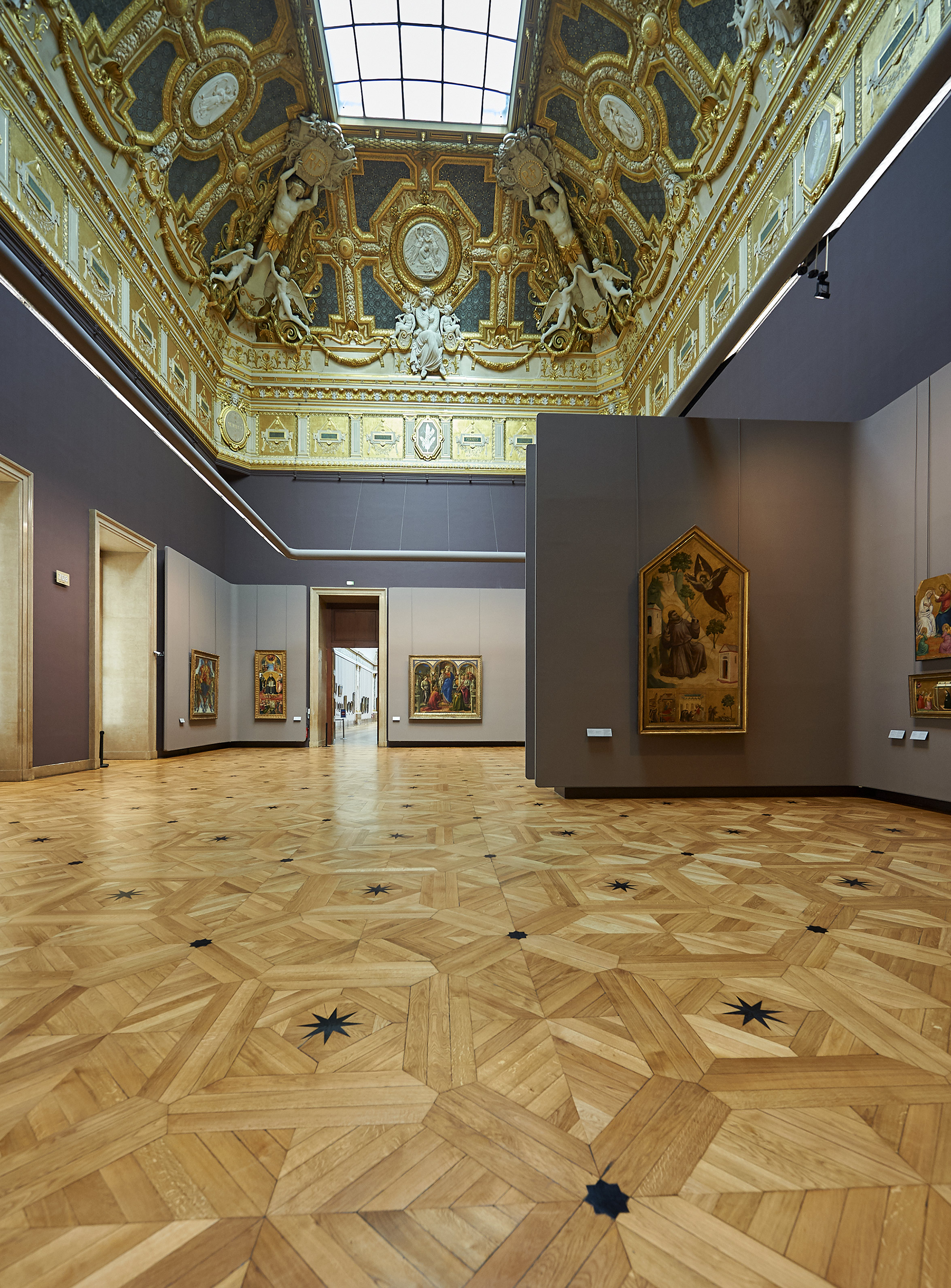Sun, Gold and DiamondsThe Galerie d’Apollon - Temporarily closed
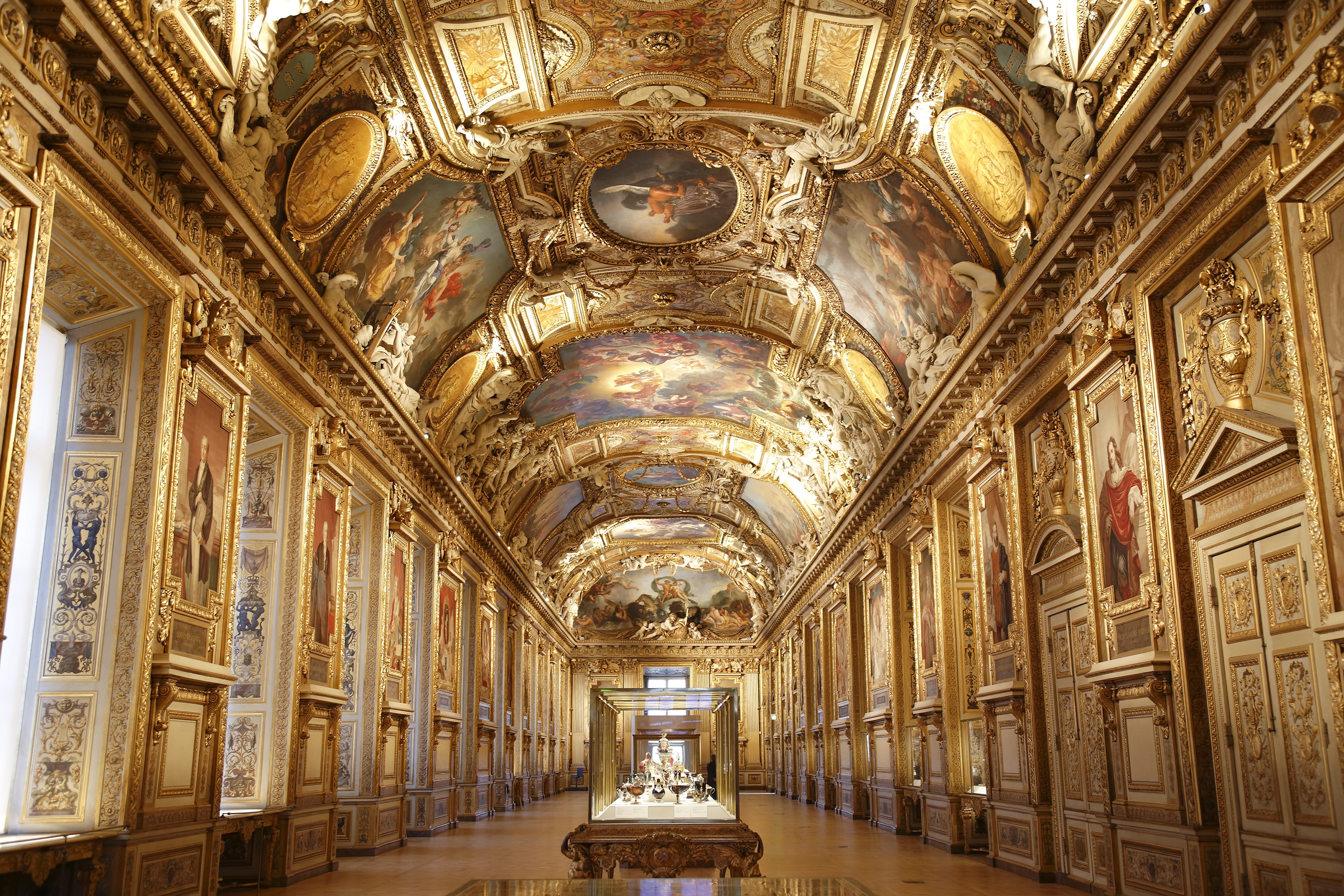
King Louis XIV famously identified himself with the sun god Apollo and this splendid gallery was the first tangible representation of that image. To create this masterpiece of architectural decoration, he summoned the greatest painters, gilders and sculptors of the day, who later worked on the Hall of Mirrors at the Château de Versailles. Today, the Galerie d’Apollon is home to the royal collection of hardstone vessels and the French Crown Jewels.
The Galerie d’Apollon is currently closed. We apologise for the inconvenience.
Fire at the Louvre!
On 6th February 1661, flames ripped through the splendid Petite Galerie dating from the reign of Henri IV. Henri’s grandson, Louis XIV, immediately set about constructing an even more beautiful gallery to replace it and entrusted its design to the architect Louis Le Vau. The young king, aged twenty-three, had recently chosen the sun as his emblem, and so this became the theme of his new gallery, named after Apollo, the Greek god of the sun and the arts.
A gallery fit for a Sun King…
Charles Le Brun, First Painter to the king, was commissioned to design the decoration. He called on the finest artists to create it. The Galerie d’Apollon – the first royal gallery in France – was a laboratory for aesthetic and architectural experimentation which, twenty years later, served as a model for an icon of French classicism: the Hall of Mirrors at the Château de Versailles.
Le Brun decorated the gallery’s vaulted ceiling with paintings of Apollo driving his chariot across the sky. Those along the central axis show the sun god’s journey, marking the different times of the day from Dawn to Night. These are surrounded by a whole cosmos of images and symbols of everything that is influenced by variations in the sun’s light and heat (the hours, days, months, seasons, signs of the zodiac and continents). The ‘Gallery of Apollo’, with its lavish carved and painted decoration, gave visual form to the sun’s power over the whole universe, magnifying the glory of the Sun King.
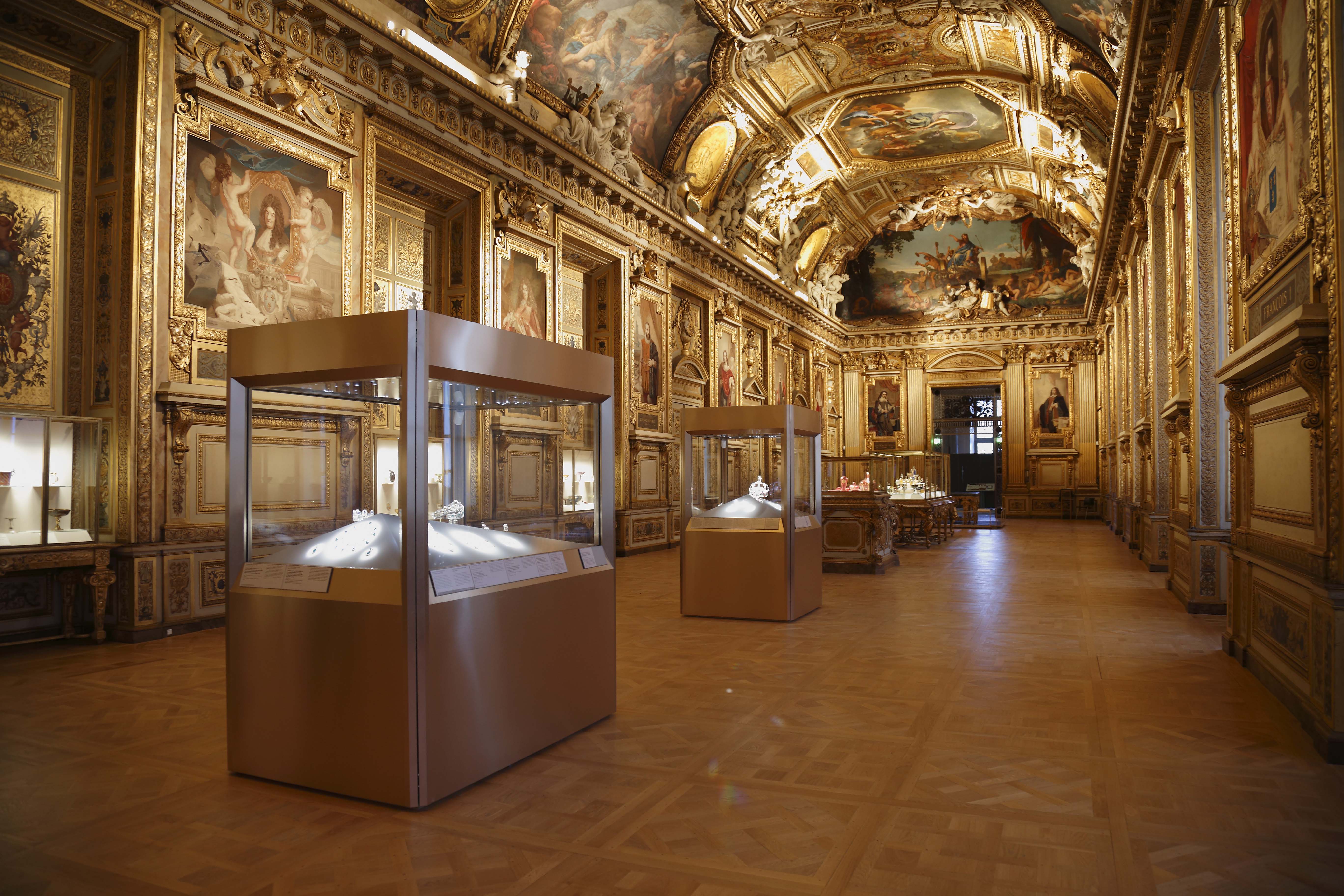
…completed by Eugène Delacroix
However, it was not long before Louis XIV began to leave Paris and the Louvre behind in favour of Versailles, where he and his court eventually settled for good. The gallery’s decoration was not completed until two centuries later, in 1850, under the direction of architect Félix Duban. To decorate the centre of the ceiling, Delacroix was commissioned for a 12-metre wide painting; the result, Apollo Slaying the Serpent Python, is a manifesto of French Romanticism. The wall decoration was also completed, with portrait tapestries of 28 monarchs and artists who had built and embellished the Louvre palace over the centuries.
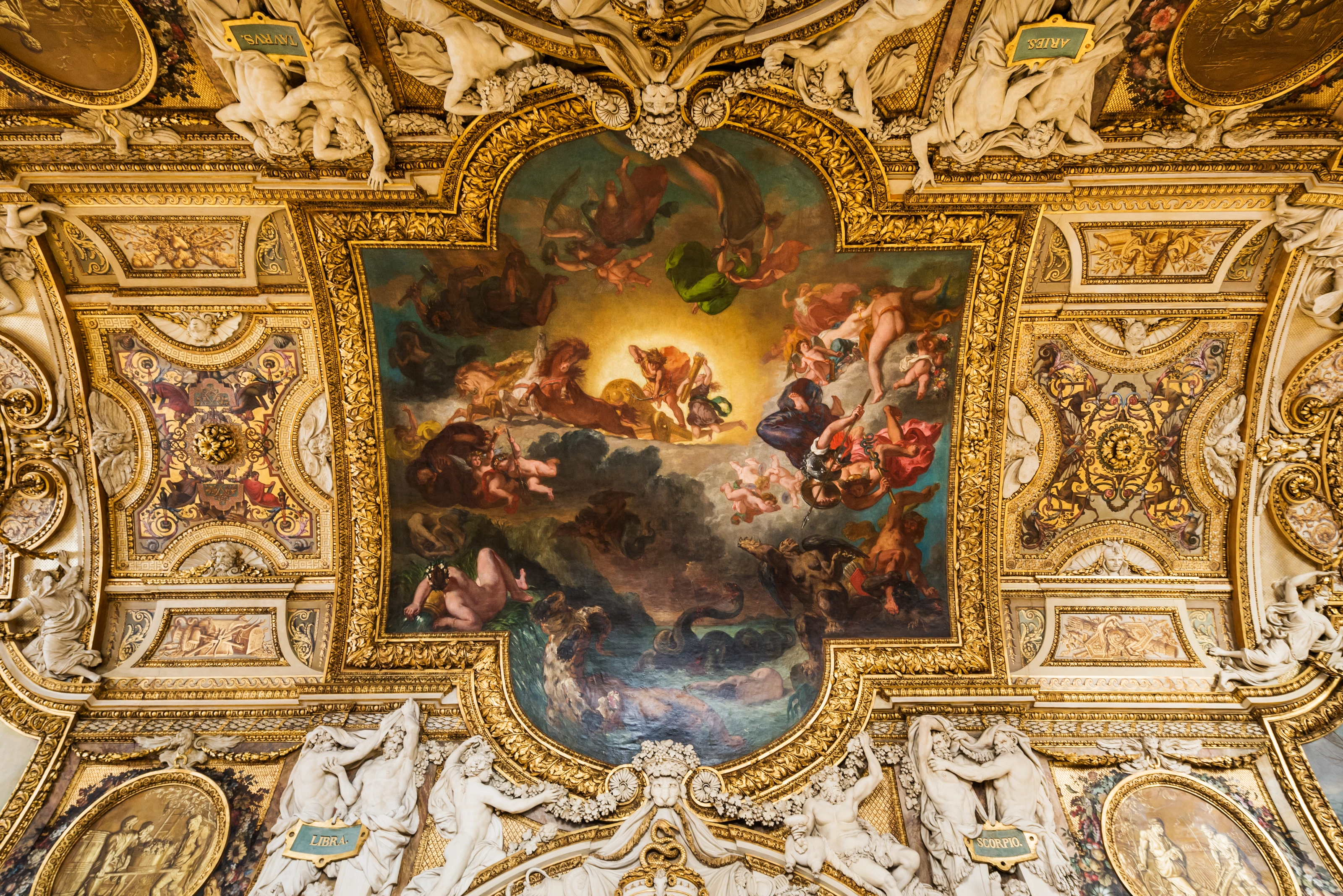
Louis XIV’s hardstone vessel collection
Since the Louvre’s transformation into a museum, the gallery has displayed the magnificent hardstone vessel collection of the kings of France. These beautifully mounted treasures were carved from precious minerals (including agate, amethyst, lapis lazuli, jade and rock crystal). Louis XIV had a particular passion for hardstones, and his collection comprised some 800 pieces.
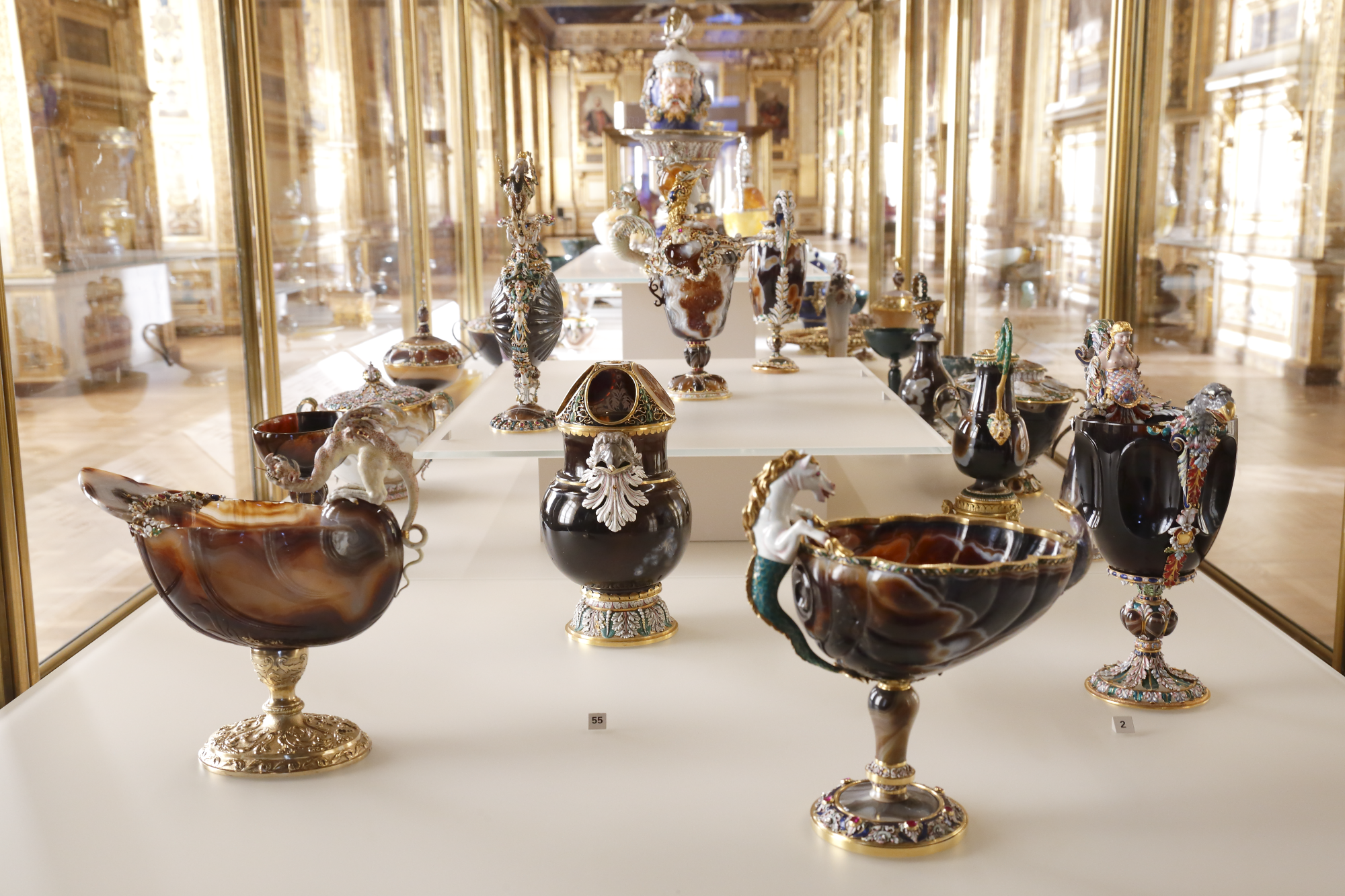
Au Louvre !
The French Crown Jewels
The royal collection also includes the Crown Jewels. The so-called ‘Côte de Bretagne’ spinel, which once belonged to Anne de Bretagne, is the oldest of the gems to have survived a tumultuous history involving theft, dispersal and sale. Three historical diamonds – the Regent, the Sancy and the Hortensia – formerly adorned royal crowns or garments. The spectacular 19th-century jewellery sets in the collection include emerald and diamond pieces that once belonged to Empress Marie Louise.
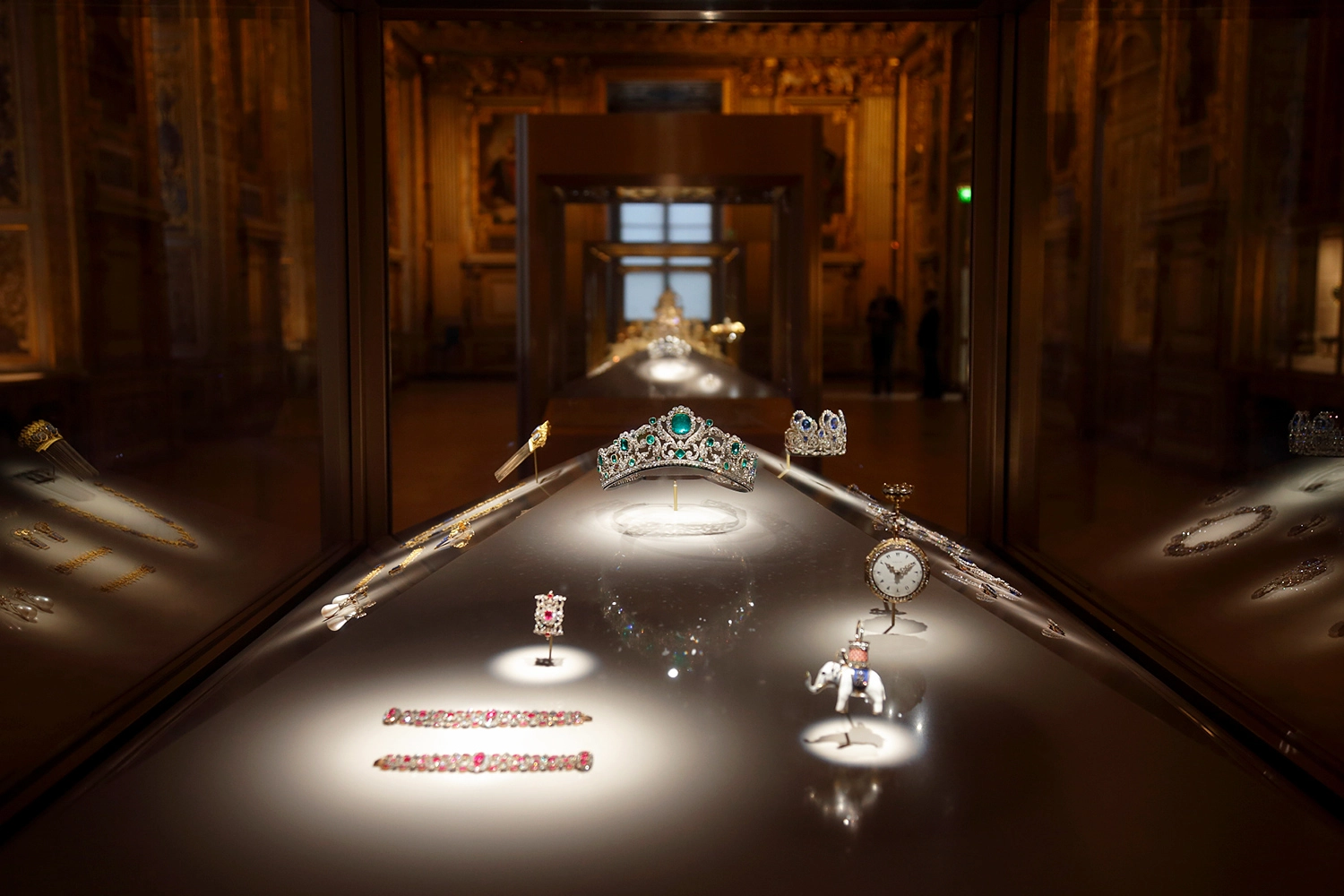
Treasures of the Galerie d’Apollon
The French Crown Jewel Collection and Louis XIV’s collection of hardstone vessels.

The 'Regent' diamond
1 sur 13
Did you know?
The historical Regent diamond
The 140-carat ‘Regent’ diamond – one of the most famous in the world – is exceptional in terms of size, weight and purity and said to be ‘of the first water’, i.e. perfectly transparent. It was found in India in 1698 and cut using the recently invented brilliant-cut technique that intensified its dazzle. It was the largest known diamond at the time; due to its exorbitant price, even the Sun King decided against buying it. Finally in 1717, Louis XIV’s nephew Philippe d’Orléans, who governed France as Regent until Louis XV came of age, purchased it and gave it his title. After that time, the Regent diamond was worn by all the French rulers, adorning among others the crown of Louis XV, the sword of Napoleon I and the diadem of Empress Eugénie.

Neptune’s ship
Acquired by Louis XIV, this lapis lazuli ‘nef’ (ship-shaped table ornament) with its gilt silver and enamelled gold mount is a masterpiece of Parisian precious metalwork. It represents the ship of the Roman sea god Neptune, adorned with flower garlands and fantastic creatures.
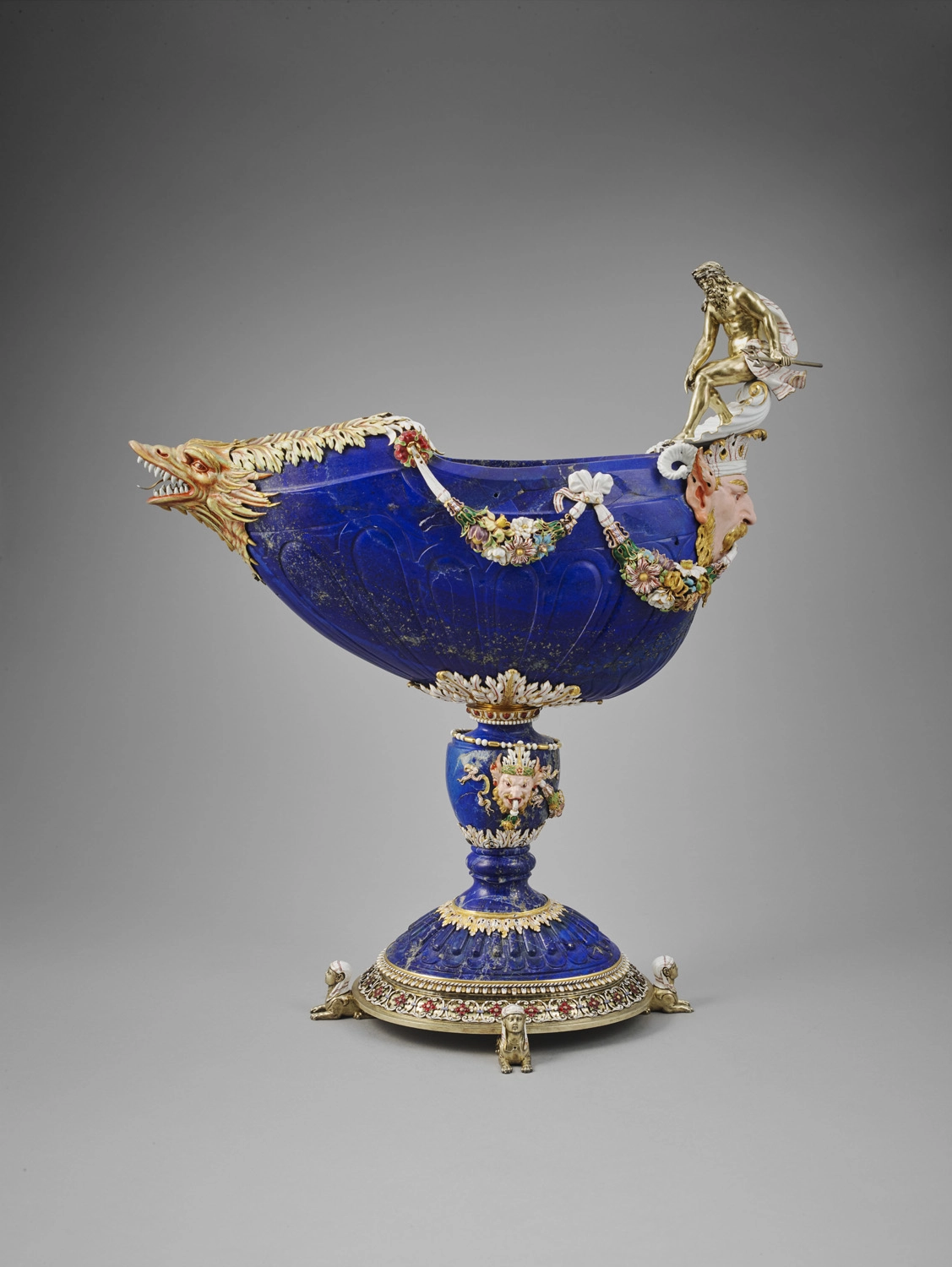
More to explore
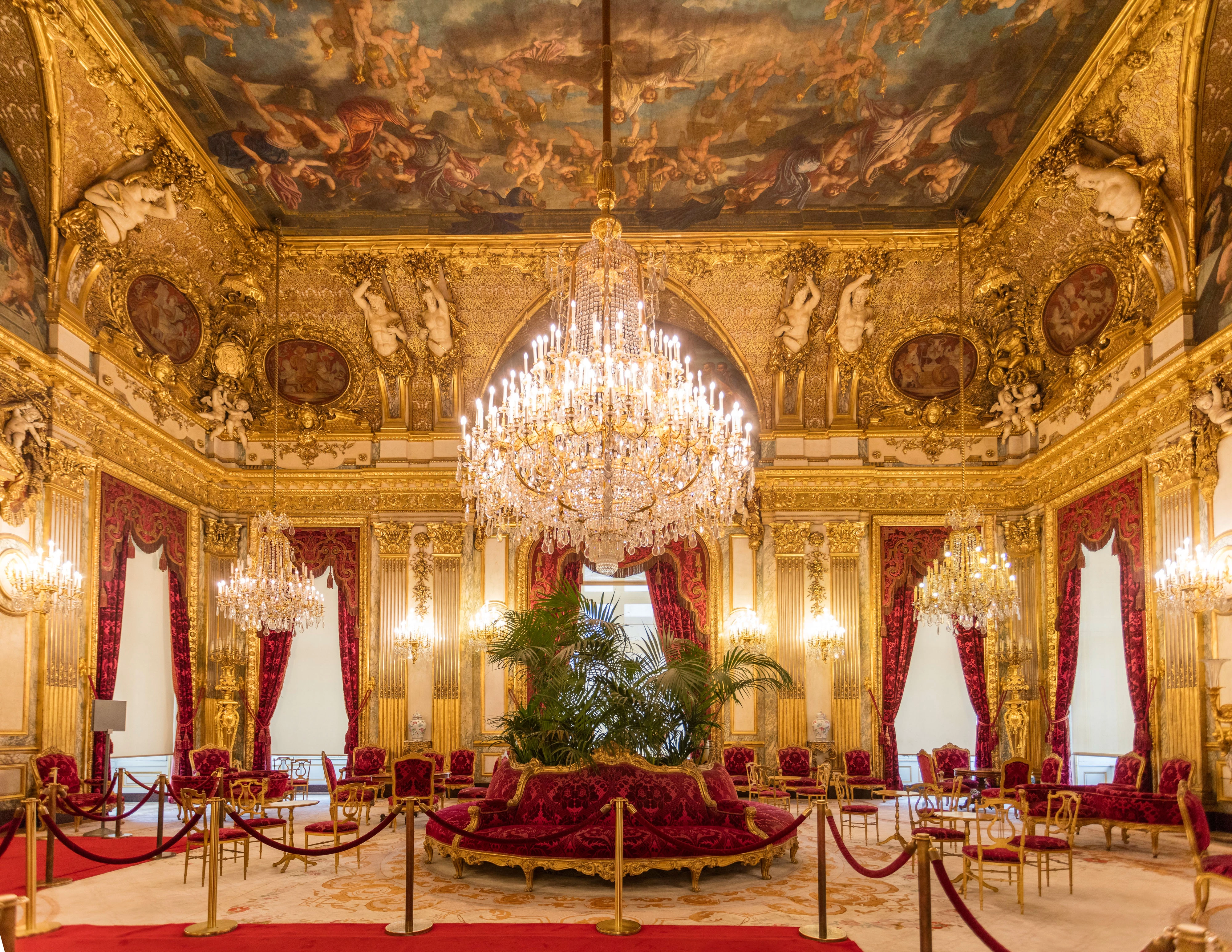
The Splendour of the Second Empire
The Napoleon III Apartments

The Art of Living at the French Court
Furniture and art objects from the 18th century
